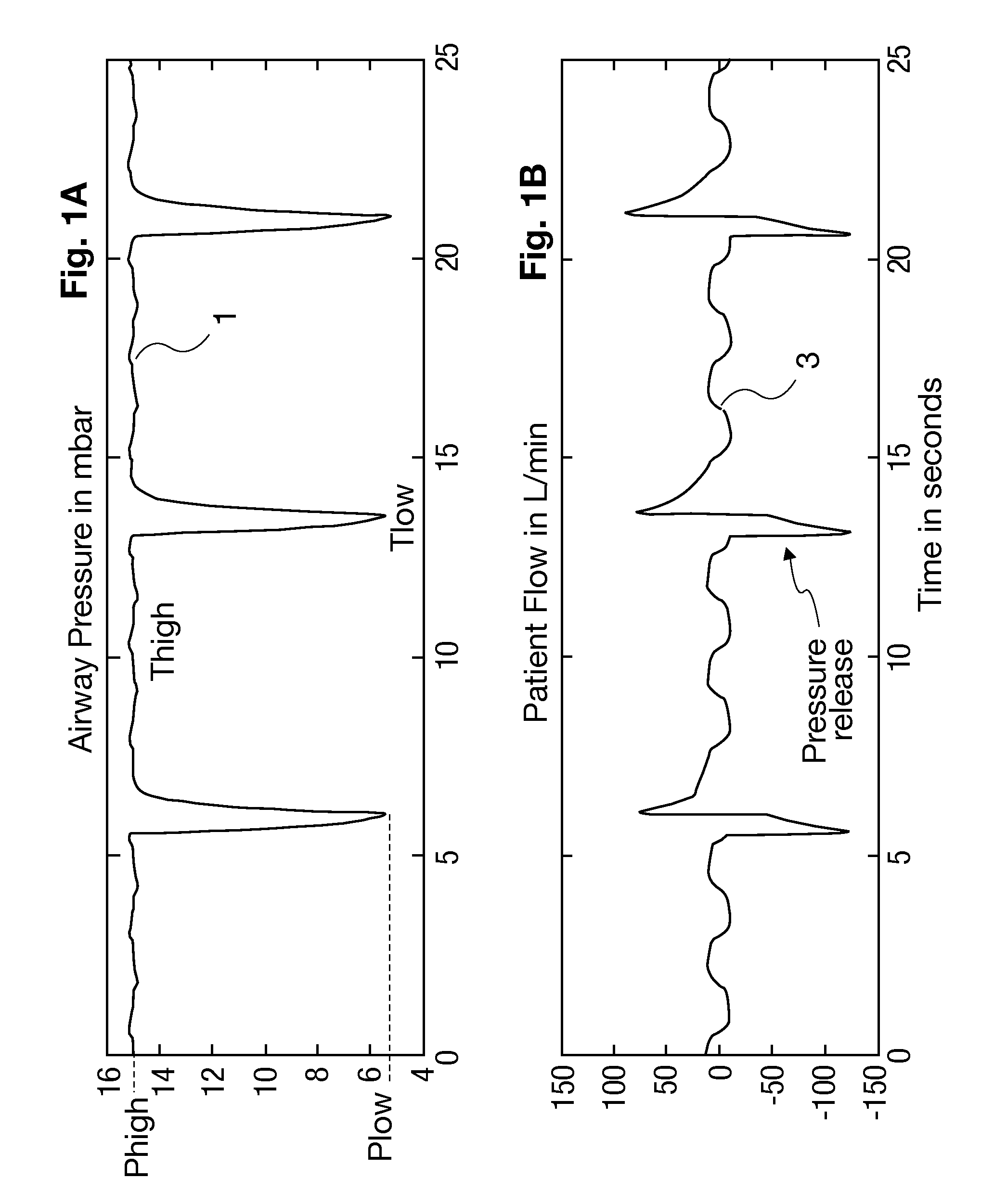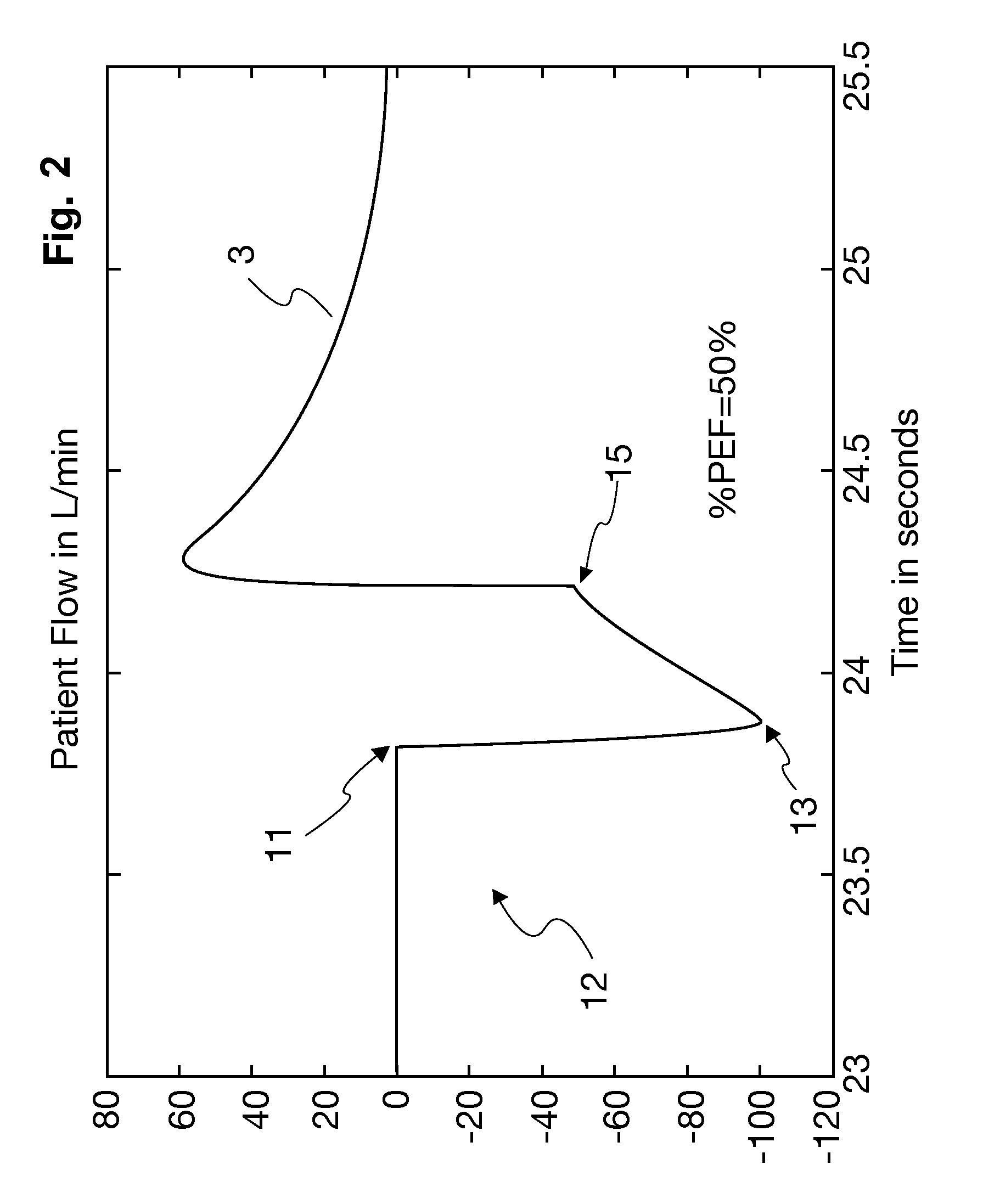Process for operating a respirator and/or anesthesia device in the aprv mode with the %pef criterion and a device operated correspondingly
- Summary
- Abstract
- Description
- Claims
- Application Information
AI Technical Summary
Benefits of technology
Problems solved by technology
Method used
Image
Examples
Embodiment Construction
[0024]Referring to the drawings in particular, FIGS. 1A and 1B show an example of respiration in the APRV mode in a simulation, where FIG. 1A shows an airway pressure 1 in mbar, and FIG. 1B shows the corresponding patient flow 3 in L / minute, each over time. The airway pressure 1 varies here between an upper pressure level Phigh and a lower pressure level Plow. The pressure level Phigh is applied for this over a duration Thigh, and the lower pressure level Plow over a duration Tlow. One of three pressure release phases shown is marked with an arrow in the lower view in FIG. 1B.
[0025]FIG. 2 shows the patient flow 3 over time in a simulation of an APRV respiration. FIG. 2 shows a point in time 11 at which a pressure release phase 12 is started. FIG. 2 shows, furthermore, a point in time 13, at which a maximum flow—equaling 100 L / minute in this case—is reached. In addition, a point in time 15, at which the pressure release phase 12 is interrupted at a set % PEF of 50%, is marked in FIG....
PUM
 Login to View More
Login to View More Abstract
Description
Claims
Application Information
 Login to View More
Login to View More - R&D
- Intellectual Property
- Life Sciences
- Materials
- Tech Scout
- Unparalleled Data Quality
- Higher Quality Content
- 60% Fewer Hallucinations
Browse by: Latest US Patents, China's latest patents, Technical Efficacy Thesaurus, Application Domain, Technology Topic, Popular Technical Reports.
© 2025 PatSnap. All rights reserved.Legal|Privacy policy|Modern Slavery Act Transparency Statement|Sitemap|About US| Contact US: help@patsnap.com



